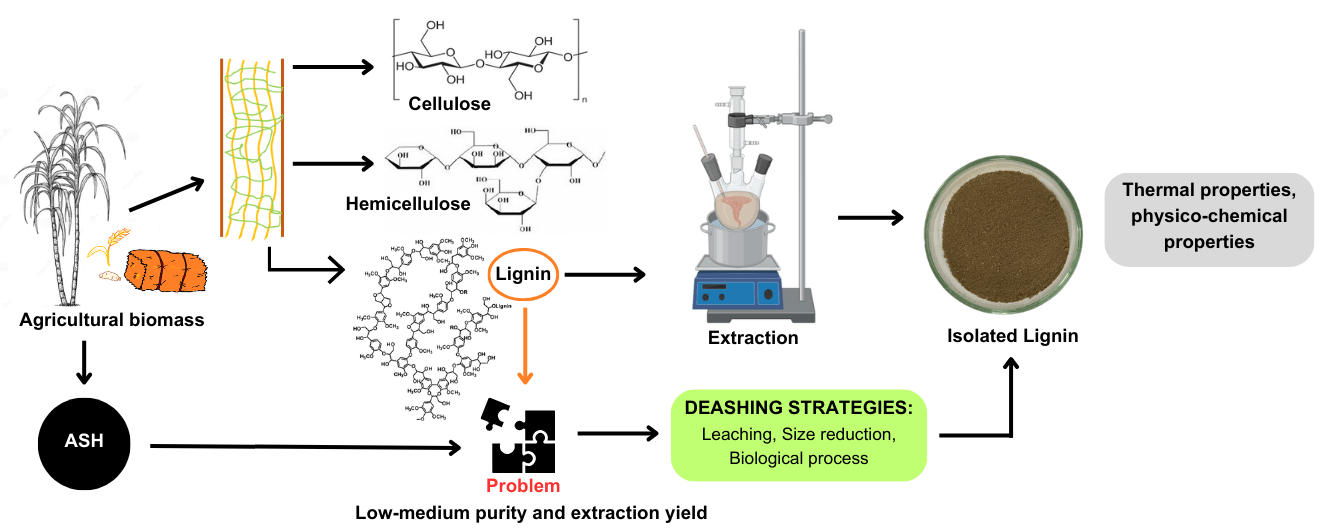 Open Access
Open Access
REVIEW
Deashing of Agricultural Residues and Its Impact on Isolated Lignin Properties: A Mini Review
1 Department of Forest Products, Faculty of Forestry and Environment, IPB University, Bogor, 16680, Indonesia
2 Research Center for Biomass and Bioproducts, National Research and Innovation Agency (BRIN), Jl Raya Bogor KM 46, Cibinong, 16911, Indonesia
3 Faculty of Chemical and Energy Engineering, Universiti Teknologi Malaysia, Skudai, 81310, Malaysia
4 Institute of Bioproduct Development (IBD), Universiti Teknologi Malaysia, Skudai, 81310, Malaysia
5 Research Collaboration Center of Biomass-Based Nano Cosmetic, National Research and Innovation Agency (BRIN), Samarinda, 75118, Indonesia
* Corresponding Authors: Wasrin Syafii. Email: ; Widya Fatriasari. Email:
Journal of Renewable Materials 2025, 13(5), 865-884. https://doi.org/10.32604/jrm.2025.058804
Received 21 September 2024; Accepted 13 January 2025; Issue published 20 May 2025
Abstract
The significant amount of ash content in agricultural biomass presents an enormous challenge for efficient conversion processes. In addressing this issue, various deashing treatments have been tested and established, including simple leaching techniques, which can either be performed with or without the addition of chemical agents. These techniques hold promise for improving the deashing efficiency while potentially altering the structural and chemical composition of biomass, specifically lignin content, which is the key focus of this review. This review starts by exploring the presence of ash in agricultural residues and its impact on biomass properties. Next, this review examines deashing strategies aimed at reducing ash levels in biomass followed by analysis of the resulting changes in lignin physical and chemical properties as well as its thermal characteristics. The final part of this review is concluded by the discussion on the limitations of current approaches and the possible future directions to address the challenges covering the environmental impacts of the deashing treatments. A green process approach is emphasized as a sustainable solution with the aim to minimize negative environmental impacts associated with chemical usage during deashing. Finally, this review highlights the potential for ash recovery as a byproduct of the deashing processes, paving the way for an integrative, closed-loop approach within the biorefinery concept.Graphic Abstract

Keywords
Cite This Article
 Copyright © 2025 The Author(s). Published by Tech Science Press.
Copyright © 2025 The Author(s). Published by Tech Science Press.This work is licensed under a Creative Commons Attribution 4.0 International License , which permits unrestricted use, distribution, and reproduction in any medium, provided the original work is properly cited.


 Submit a Paper
Submit a Paper Propose a Special lssue
Propose a Special lssue View Full Text
View Full Text Download PDF
Download PDF Downloads
Downloads
 Citation Tools
Citation Tools